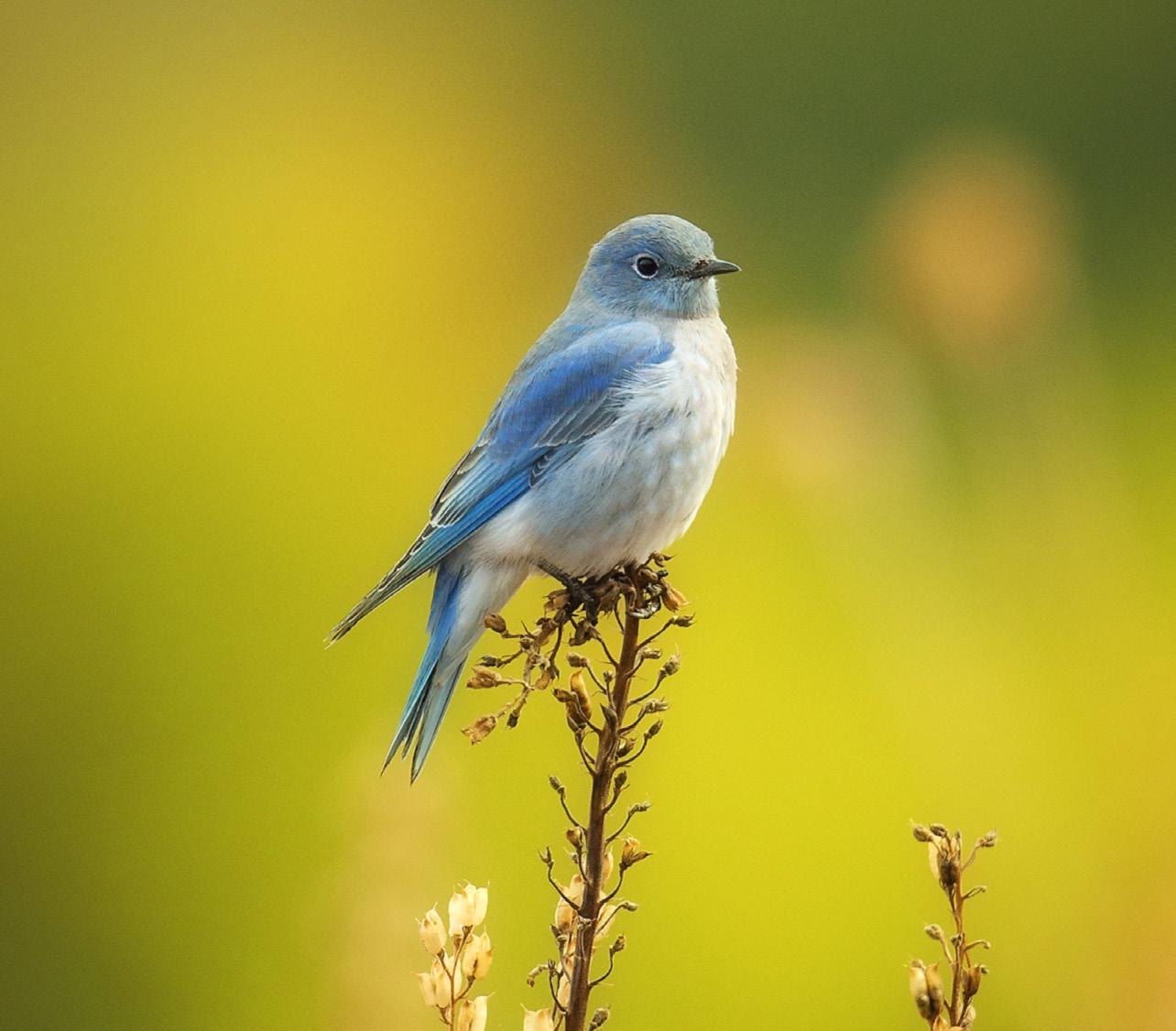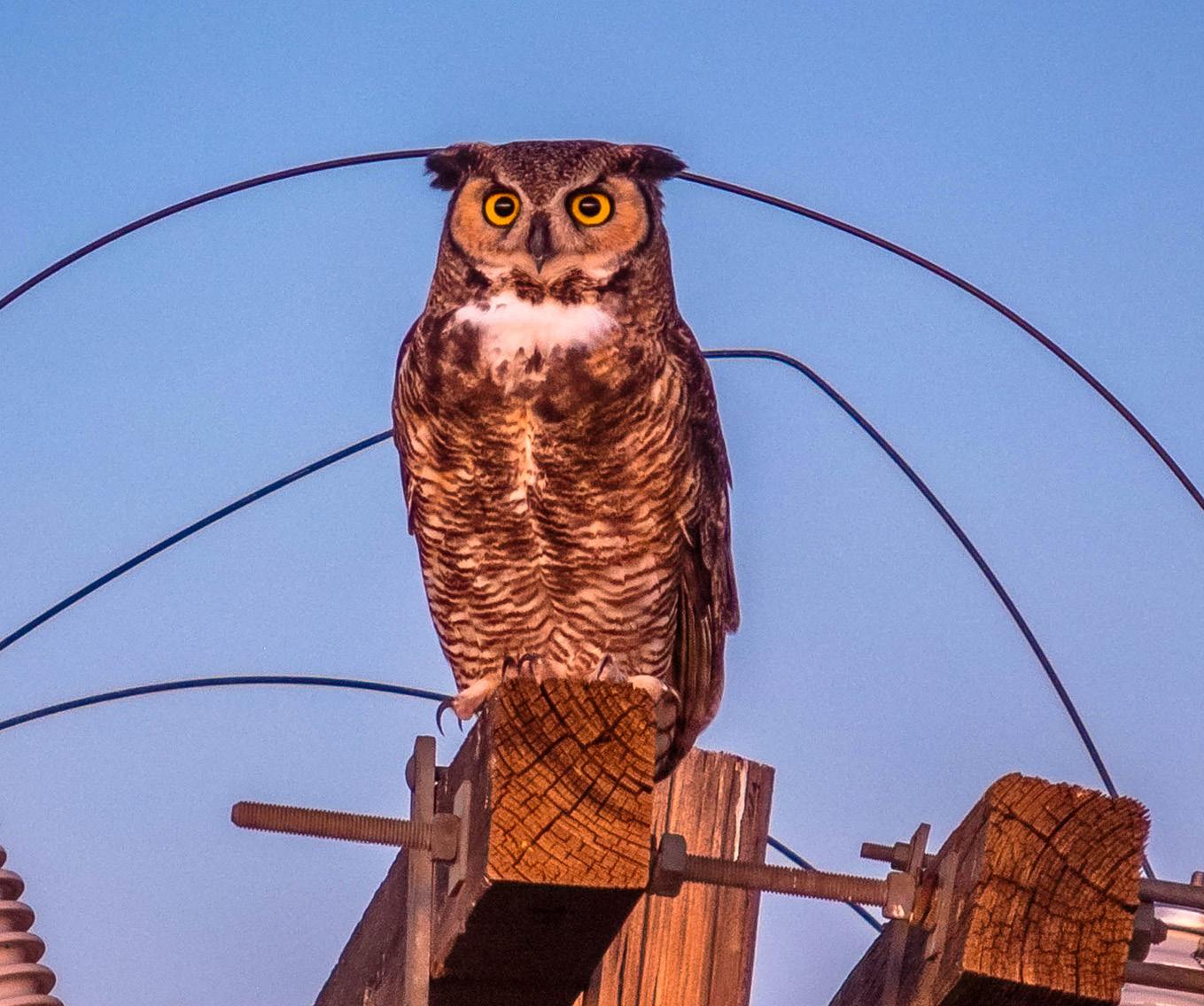





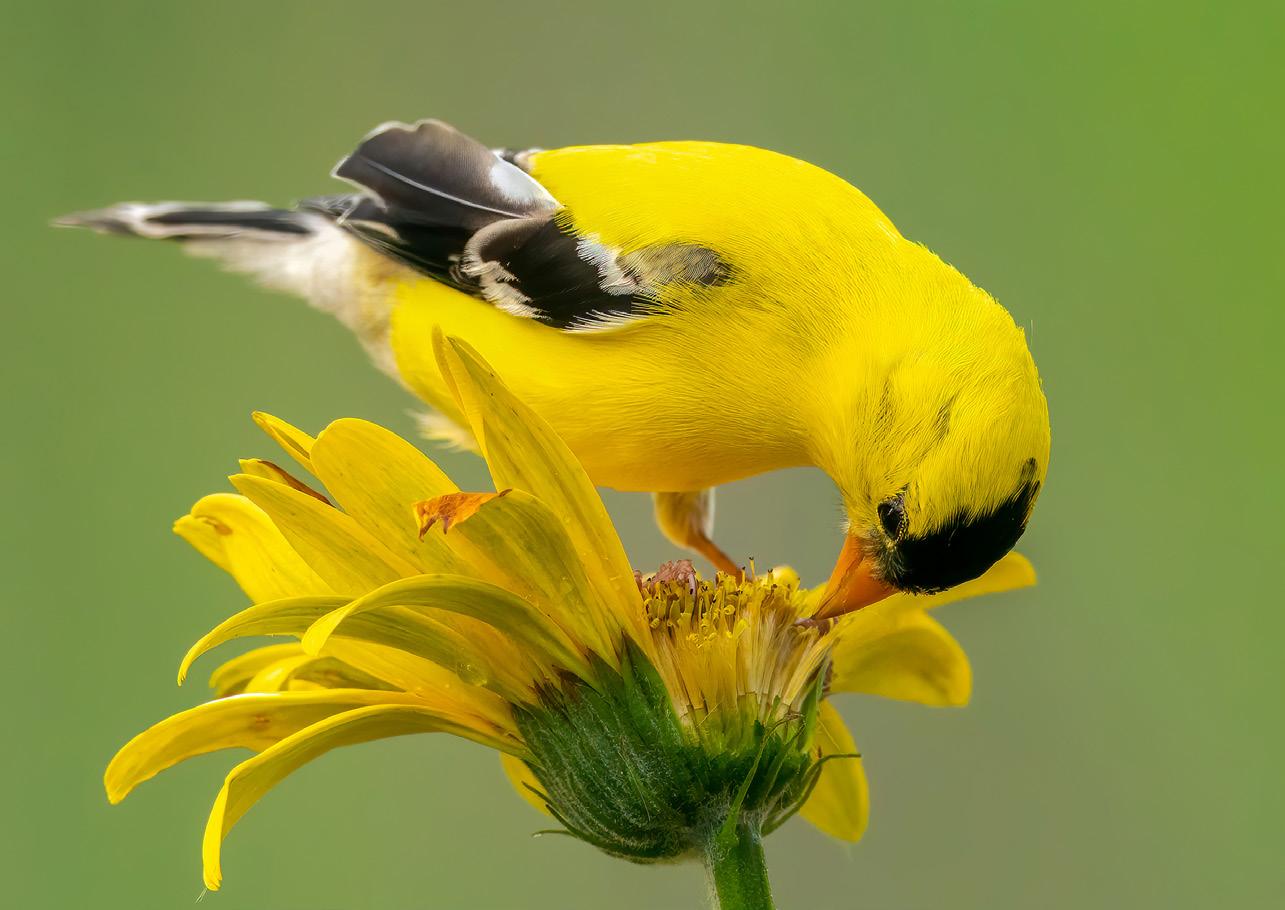 American Goldfinch by Md. Khadimul Islam, Shutterstock
Carolina Chickadee by ConnieBarr, Shutterstock Common
American Goldfinch by Md. Khadimul Islam, Shutterstock
Carolina Chickadee by ConnieBarr, Shutterstock Common

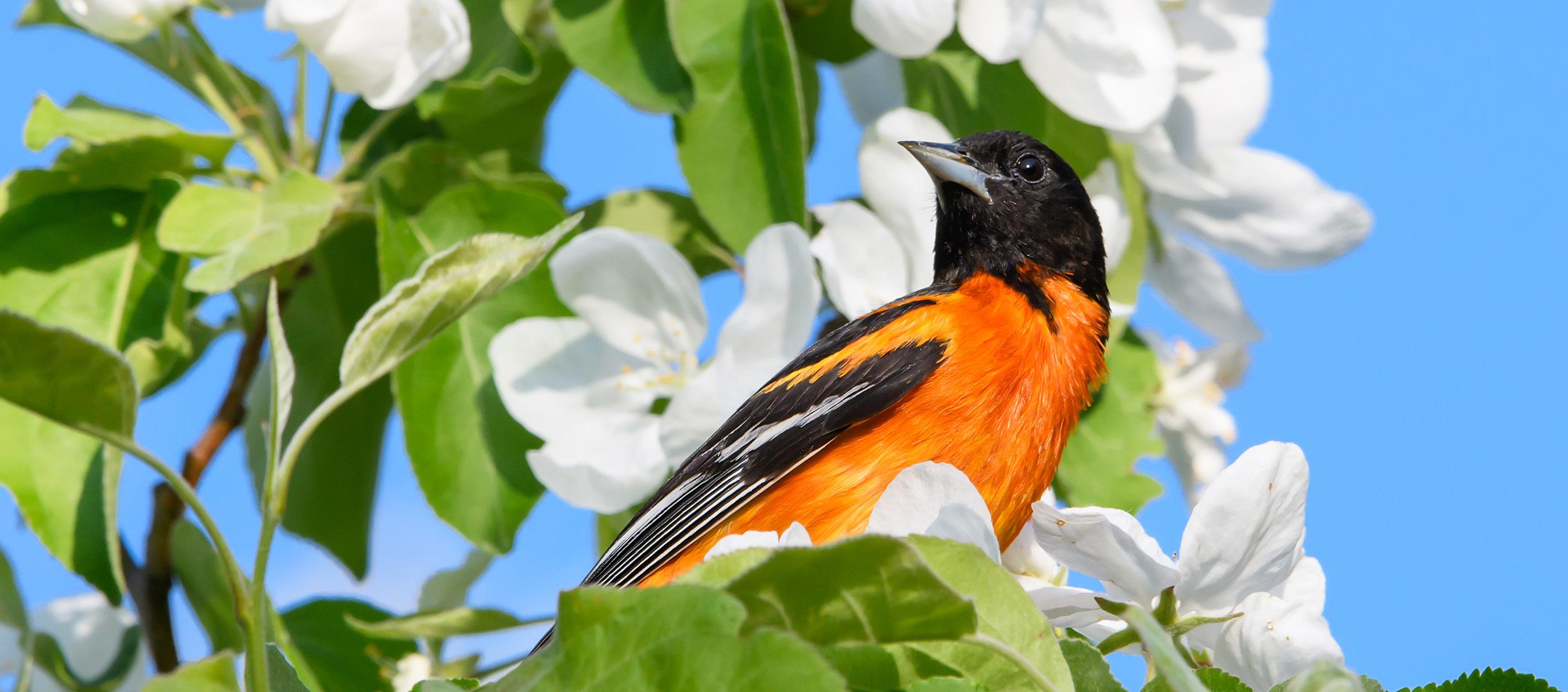
States, counties, and cities play an integral role in the protection of birds and other wildlife. Though federal protections through laws and rules are beneficial, states and local jurisdictions often have the most up-to-date knowledge on species movements and status; their stakeholders have the most to gain from good conservation actions, and feel losses more personally. Governors, delegates and state senators, county commissioners, mayors and city council members inherently have close ties to their constituents and can quickly respond to calls for needed changes to conserve birds and their habitats.
Where federal legislation has to work in broad swaths and has many more hurdles to pass on its way to becoming a law, state-level bills can be more tailored to local species and communities. Activism at the state, county, and city level is much closer to the areas where a law will be implemented, allowing for buy-in from the community and more direct communications with decision makers.
In this guide from American Bird Conservancy we will outline solutions to address six different threats to birds posed by anthropogenic causes. Each section contains:
• Issue: A description of the issue at hand
• ABC’s Work: A brief description of ABC’s involvement in that particular issue
• Policy Solution(s): Approaches for lessening impacts from, addressing, and/or neutralizing the described threat through policy proposals
• Legislative Examples: Bill numbers and descriptions of enacted or introduced legislation to address the described threat
• Additional Guidance: Other actions, thoughts, and considerations from ABC experts, plus who to contact for more information
Please note, this is not intended to be a copy-and-paste resource; state legislation works best when it is tailored to the needs and mindset of the state in which it is being applied. Please use the language and examples in this document as a starting point or source of inspiration for original legislation.

The domestic cat (Felis catus) is a major threat to birds. Introduced to the United States with European colonists, the number of domestic cats has tripled in the past 50 years (Lepczyk et al., 2022).
Today, more than 100 million cats roaming outdoors function as an invasive species in the United States with enormous impacts. Every year, cats kill 2.4 billion birds in the United States alone. Cat predation is by far the largest source of direct, human-caused mortality to birds in the U.S. and Canada. This stunning level of predation is unsustainable for many already-declining species like Least Tern and Wood Thrush.
ABC is working throughout the Western Hemisphere to protect native birds from invasive species, with a special focus on keeping cats indoors. In addition to cats, we also work hard to protect the endangered birds of Hawai'i from other non-native predators, which often means fencing off habitats.
ABC’s Cats Indoors program educates the public and policy makers about the many benefits to birds, cats, and people when cats are maintained indoors or under an owner's direct control Essentially, we support treating cats more like we treat dogs, by supporting responsible ownership behaviors and removal of unowned pets from the landscape. In addition to supporting effective, science-based management strategies and policies, we also oppose trap, neuter, release (TNR) policies for feral cats because of the persistent and severe threats posed by these cats on the landscape.
Other ABC efforts have included distribution of educational materials, such as brochures and public service announcements, to spread the word that cats, birds, and people are better off when cats are kept indoors and legal action that resulted in the removal of feral cats from Jones Beach State Park in New York to protect nesting Piping Plovers.
Keeping domestic cats indoors and off the landscape is critical to protecting native species and reduce public health risks. Policies that implement microchipping, sterilization, and vaccination and prevent the trespassing of cats on public and private property make a measurable difference in protecting native species supporting healthy communities.
Location Bill Number
Virginia HB 221
Maine LD 644
California SB 573
Hawai’i 1262_SD1
Would authorize communities to adopt free-roaming cat management plans and establish minimum requirements for cat management plans.
2024 Being considered
Would have prohibited the trespassing of domestic cats. 2023 Not passed
Requires with some exceptions, that an animal shelter microchip a dog or cat prior to the animal’s release.
Would have required the Hawai’i Department of Land and Natural Resources to consider the conclusions of the Kaua’i Feral Cat Task Force when setting the department’s policies regarding feral cats.
2020 Enacted
Hawai’i SB 2450
Would have prohibited the release or care of (e.g., provide food or water) predators, including domestic cats, on state lands. 2016 Not passed
Cats are beloved by many. Understanding this, ensure legislation communicates the benefits to cats, wildlife, and people. Additionally, cat legislation can successfully address the problem without singling out cats. For example, microchipping is good for all domestic pets.
For more information, contact: Grant Sizemore, Director of Invasive Species Programs, GSizemore@abcbirds.org

Birds fly into glass because they do not perceive it. Instead they see-through the glass or perceive a reflection as their habitat. This misperception has deadly results, Birds tend to collide with glass at high speeds and their small bodies, composed of hollow bones, leave them particularly vulnerable to injury. Each year up to a billion birds die as a result of collision.
Collisions in the U.S. occur most frequently during spring and fall migration, as many birds move between northern breeding grounds and southern wintering grounds. The largest number of collisions occur during the fall, when migrants include both adult birds and their offspring. Although migratory birds are at a heightened risk, collisions occur year-round. Bird baths, feeders, and areas lit at night are frequent collision hotspots.
ABC works on multiple fronts to reduce bird collisions, from advocating for collision-reducing legislation and evaluating new glass products to educating architects, developers, and homeowners and much more. ABC's Tunnel Testing Program studies how birds react to patterns on glass. The information gathered from testing is used to rate new glass and retrofit products that prevent collisions. The “Threat Factor” or TF score was developed by ABC to show how well one material will perform relative to another, in a standard, controlled test environment, with lowest numbers performing best.
Knowledge is key to reducing bird collisions. ABC is dedicated to providing the public with the information and analyses necessary to prevent bird collisions. The ABC library of downloadable resources contains a collection of materials produced by ABC that offer guidance based on both science and experience. From sample language to construct a model ordinance to a Korean translation of bird-friendly building design, these resources activate the public.
Most recently ABC partnered with the Law, Ethics, and Animals program at Yale Law School to produce the report, “Bird Safer Cities for Birds: How Cities Are Leading the Way on Bird-Friendly Building Policy.” This report is an excellent reference on policies that help prevent bird collisions.
Only one state has a bird safe buildings law, however, several cities and towns have local laws and ordinances in place to help prevent bird collisions.
In the Yale report, ABC Glass Collisions Program Director, Dr. Christine Sheppard says that the following three questions must be answer by any successful bird-window collision policy:
1. “What structures are covered by the policy?”
2. “How much and what portions of each structure must be ‘bird-friendly’?”
3. “How is ‘bird-friendly’ defined?”
Building retrofits, lighting changes, and limiting construction in “bird sensitive areas” are all valuable changes that should inform comprehensive and solution-oriented policy. Location
Maryland HB 6 Requires certain state-owned buildings to use bird safe windows and lighting.
Cupertino, California Ordinance 212225
New York City Initiative 1482B
Madison, Wisconsin MGO § 28.129
San Francisco, California Standards for Bird-safe Buildings
Additional Guidance
Amends building code to prevent bird collisions by regulating the windows, glass, and lighting used.
Requires new buildings to use materials that reduce collisions.
Mandates large-scale construction and refurbishment projects use treated bird-safe glass to reduce collisions.
Amends planning code to require new builds, additions to existing structures, and major façade renovations use bird-friendly glazing treatments approved by the city.
2023 Enacted
2021 Enacted
2019 Enacted
2020 Enacted
Local action and data are necessary for building momentum and action on bird collisions. ABC’s “Creating Bird-Friendly Legislation” and “Existing Bird-Friendly Legislation & Ordinances” webpages are helpful references for citizens and governments working to develop successful legislation.
At the local level, it is also important for citizens to encourage the federal government to act on this issue. The Federal Bird Safe Buildings Act is a federal bill that would protect birds from collisions by mandating the incorporation of bird-friendly design and materials into the construction of certain federal buildings. Some version of this bill has been introduced for the last decade. More concerted advocacy could move this bill finally, setting a national precedent that would prevent collisions and further motivate local areas to act.
For more information, contact: Kaitlyn Parkins, Glass Collisions Program Coordinator, KParkins@ abcbirds.org

Artificial or human-generated light at night is linked to bird-collision deaths. At night, this light disorients migrating birds, luring them toward and into urban centers. Once birds land near buildings, they are at increased risk of glass collisions, one of the most significant human-caused threats to birds in North America. Up to a billion birds die each year as a result of glass collisions. Artificial light can also negatively affect the nesting success of breeding birds, and has been linked to declines in insect populations, which many bird species rely on for food. The dangers posed to birds by artificial light spread as expanding development illuminates more of the night sky each year.
Voluntarily darkening the night sky for birds through “lights out” initiatives help reduce bird mortality in specific areas. Flashing lights and “smart” motion-sensing lights are other ways to deter birds and cut down on deadly collisions. These strategies, however, are only effective when employed in tandem with bird-friendly design. Birds will travel through cities and the built environment regardless of the amount of artificial light. Addressing lighting is one piece of effectively mitigating bird collisions.
ABC educates the public about how lighting contributes to collisions and advocates for comprehensive policy solutions. ABC has also been working with communication tower operators. Tall towers use lights to alert aircraft. Red, steady-burning lights that are used for this purpose are particularly dangerous to birds. The Federal Aviation Administration (FAA), which regulates telecommunications, recommends operators to switch from using steady-burning to flashing lights. The FAA’s guidance is supported by the U.S. Fish and Wildlife Service. Flashing lights maintain safety for aircraft and tower operators, while preventing bird collisions and saving the industry money through operation and energy savings. This is a win-win scenario and an example of how minor lighting changes can make a big difference for birds.
To learn more, visit the Songbird Saver website and app. This tool locates tall towers nearby and enables you to send a letter requesting the steady-burning lights to be turned off to protect birds.
ABC’s artificial light and collisions position statement includes the following general recommendations for crafting policy solutions:
• Eliminate all unnecessary lighting
• Downshield all external light sources
• Focus light only where needed, especially near sensitive habitat
• Use minimum light intensity required for each task
• Light color: 2200K best, no more than 2700K
• Reduce light transmitted through windows by indoor lights
• Use motion sensors, automatic dimmers and timers whenever possible (so that lights are off whenever possible)
• Avoid uplights and other vanity lights
• Remember that even downshielded lighting can impact insects, bats and other wildlife
Legislative Examples
Cupertino, California Cupertino Municipal Code 19.102.040
Maryland HB 6
Evanston, IL Bird-Friendly Building Design Ordinance
Minnesota State of Minnesota Sustainable Building Guidelines
Additional Guidance
Requires most outdoor lighting to use shielded fixtures, limits illumination levels, and sets design and other standards.
Unless necessary interior and exterior lighting is shielded and minimized from midnight to dawn from March 1 - May 31 and from August 1 - October 31.
Cites light pollutions as a collision factor, limits types of exterior lighting.
Requires exterior light pollution reduction.
Light legislation needs to be crafted holistically, accounting for how it factors into collisions, as well as negative health outcomes for humans and other wildlife. Understanding the exact lighting concerns in your local area is necessary for effectively creating policies that prevent harm to birds.
For more information, contact: Kaitlyn Parkins, Glass Collisions Program Coordinator, KParkins@abcbirds.org
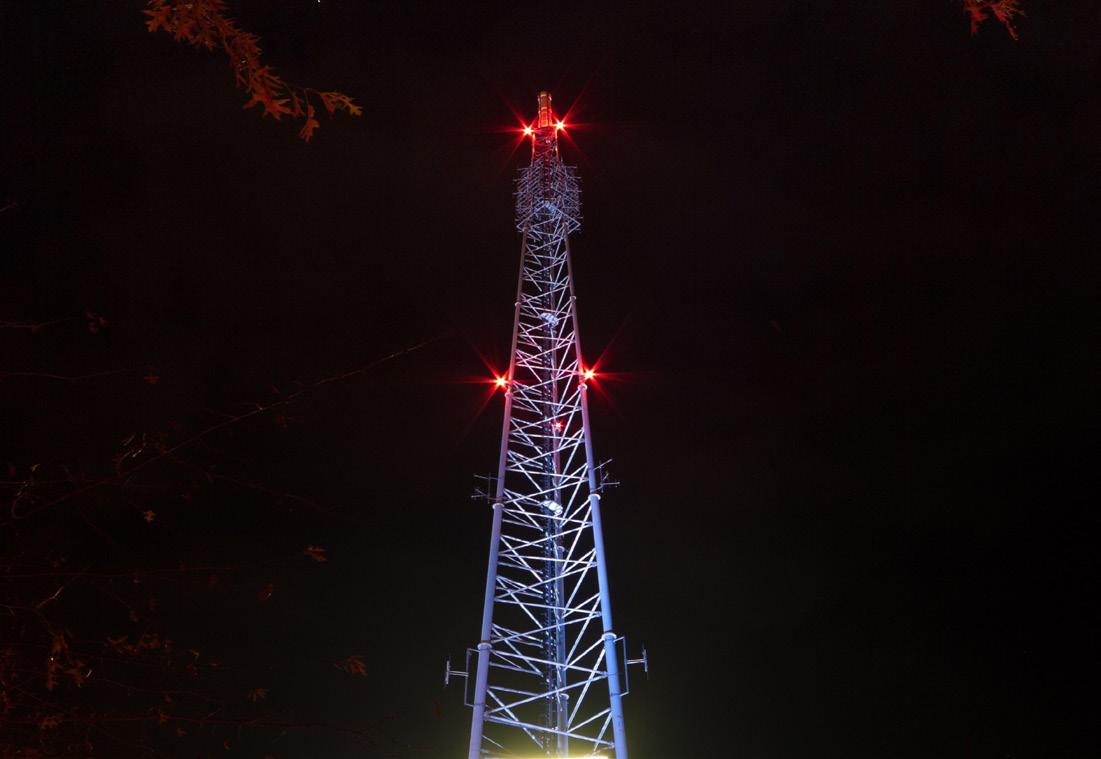

Chemical pesticides have become a near-ubiquitous part of human society. They are commonly used in our gardens, lawns, parks, homes, schools, manufacturing facilities, and golf courses. Even more prevalently, they are heavily relied upon in our agricultural systems; a single crop may have pesticides applied as a seed coating, a soil drench, an aerial spray, a hand spray, and a post-harvest spray, all in the same growing season.
Many pesticides have directly negative impacts on birds, especially neurotoxic insecticides such as neonicotinoids, organophosphates, carbamates, and paraquat. Other chemicals such as herbicides and fungicides may have negative impacts on birds if accidentally directly sprayed on them, though these instances are rare.
Birds are heavily impacted through accidental poisonings by ingesting rodenticide-contaminated prey (mice, rats, voles, squirrels, gophers, etc.) as well as through loss if insect prey due to overuse of conventional pesticides. When insecticides infiltrate water or soil, they inadvertently kill beneficial insects and prey items for birds. Similarly, herbicides which leave their targeted use area and decrease available habitat for beneficial invertebrates has a negative cumulative impact on birds. When birds ingest contaminated prey, or are denied prey, they may suffer from a wide litany of negative impacts.
Pesticide-coated seeds are a particularly prominent threat to birds. A single seed coated with a pesticide is enough to kill a songbird if ingested during spillage or planting. Plants grown from pesticide-coated seeds often have contaminated pollen, nectar, and fruit, which may impact pollinator species like hummingbirds. Further, most of a systemic insecticide coating leaves the seed hull, contaminating water and soil, thus contributing to decreased prey availability.
It should be noted that ABC does NOT advocate for full bans on pesticide use. Rather, we support implementation of Integrated Pest Management strategies and reducing unnecessary applications of chemicals.
ABC is active at the federal and state level. Federally, we work to advise the Environmental Protection Agency through formal meetings, advisory boards, and submission of comments. We also engage in legal challenges such as lawsuits and petitions to existing policy, when called for. We also brief congress on pesticide issues, help craft legislation, advocate for better appropriations for wildlife protection in the federal budget process, and work to defeat harmful pieces of legislation, regulation, and budget riders.
At the state level we do much the same, working in an individual state’s legislature to support sensible pesticide reform and, where needed, restriction. We advise state wildlife agencies, engage in grassroots organizing, and extensively educate and support lawmakers and regulators taking a commonsense approach to pesticide reform and mitigation.
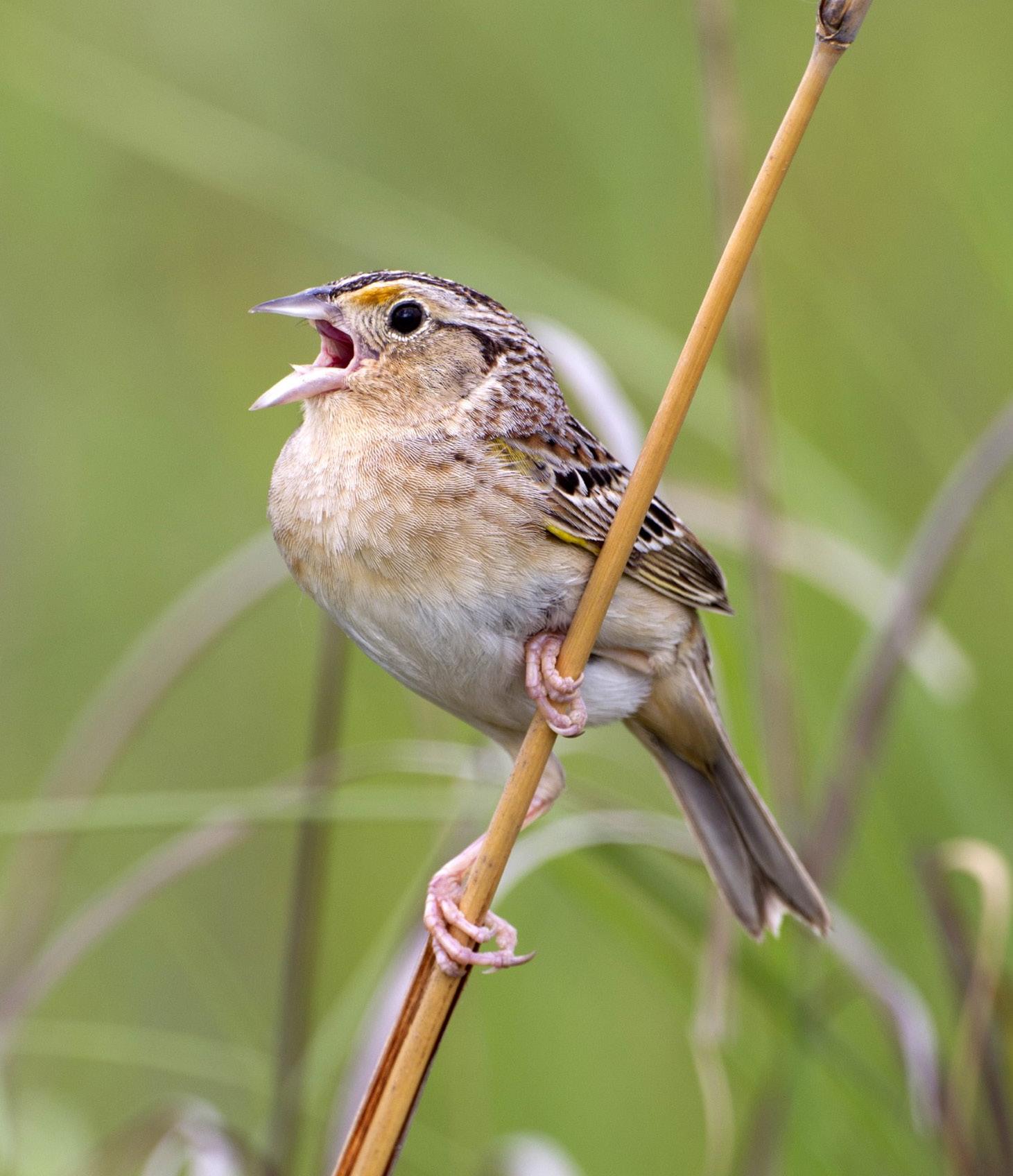
ABC supports and advocates for policies which operate in the following ways:
Neonicotinoids
• Moving neonicotinoids (imidacloprid, thiamethoxam, clothianidin, dinotefuran, acetamiprid) to Restricted Use status, meaning only Certified Pesticide Applicators access and use them
• Banning use of neonicotinoids in non-agricultural settings
• Banning use of neonicotinoids in outdoor settings
• Banning the use of certain neonicotinoids in agricultural and non-agricultural settings
• Requiring a written prescription from an agronomist before deploying neonicotinoids
Pesticide-Coated Seeds
• Prohibiting use of systemic-insecticide coated seeds
• Can be applied to only certain crops
• Requiring a written prescription from an agronomist before using a pesticide seed-coating
Plants and Nurseries
• Require no systemic insecticides to be used in growth of nursery plants
• Preference for native species
• Preference for plants grown without synthetic pesticides
Rodenticides
• Prohibition on the use of second-generation anticoagulant rodenticides
• Prohibition on the outdoor use of chemical rodenticides
• Prohibition on the use of chemical rodenticides in schools, parks, other communal spaces
Integrated Pest Management
• Requirement of integrated pest management plan in communal spaces
Grasshopper-Sparrow by (c) Michael StubblefieldColorado SB23-266 Makes neonicotinoids Restricted Use Pesticides 2023 Enacted
Vermont H 205 Requires department of agriculture to develop guidance on use of neonicotinoid-coated seeds 2019 Enacted
New York A2236 Prohibits use of neonicotinoid-coated corn, soy, and wheat seeds
Proposed
Massachusetts MDAR Regulation Prohibits the use of neonicotinoids in outside spaces 2021 Enacted
California AB1788 Bans SGA Rodenticides until the Department of Pesticide Regulation completes a re-evaluation 2020 Enacted
Illinois 225 ILCS 235 Requires schools and daycare centers to, when economically feasible, develop an integrated pest management plan 2019 Enacted
The federal government and federal agencies often look to states to make up for gaps in their regulatory processes. Especially with particularly dangerous chemicals, like systemic insecticides, states have enormous power to make better decisions for human, ecosystem, and wildlife health.
For more information, contact: Hardy Kern, Director of Government Relations, Birds and Pesticides Campaign, EHardyKern@abcbirds.org


Each year approximately 17.6 billion pounds of plastic enters the ocean. Depending on the type of plastic, it can take items from 10 to over 500 years to biodegrade in a marine environment. For birds that inhabit our seas and shores, plastic pollution poses a major threat, claiming the lives of countless birds every year. These deaths are largely driven by ingestion, when birds swallow plastics, and entanglement, when birds are trapped or strangled by plastic materials.
90% of seabirds have ingested some form of plastic, scientists estimate. By 2025 that figure is expected to rise to 99%. Microplastics, plastic particles less than 5 mm in diameter, pose an additional concern. Science is only just beginning to understand their impact on wildlife, human, and environmental health.
While seabirds experience the greatest threat from plastic pollution, birds inland also encounter plastic that can harm them.
ABC supports legislation that would dramatically reduce the amount of plastic that is discarded and washes into our oceans. Currently, ABC is advocating for Congressional action on a range of federal bills, including:
• Save Our Seas 2.0 Amendments Act, which would improve the existing federal marine debris law
• Rewarding Efforts to Decrease Unrecycled Contaminants in Ecosystems (REDUCE) Act, which would create an excise tax on virgin plastic resin
• Break Free From Plastic Pollution Act, which would reduce single-use plastics, increase product producer responsibility for waste and pollution, and improve recycling
• Plastic Pellet Free Waterways Act, which would establish limits to plastic pellet discharge into waterways
• Reducing Waste in National Parks Act, which would limit and reduce the use of single-use, disposable plastic in the National Parks System
• Protecting Communities from Plastics Act, which would generate more research and protection of communities from the health impacts of plastic
• Recycling and Composting Accountability Act, which would instruct the EPA to improve data collection and reporting on recycling and composting
• Recycling Infrastructure and Accessibility Act, which would establish a pilot grant program to improve recycling accessibility in underserved communities.
ABC is also engaged in the annual appropriations process, requesting that Congress allocate more federal spending to addressing marine debris and adding more fisheries observers on the water. These priorities will improve ocean habitat and help better track problem areas of marine debris.
On the programming side, ABC and partners are working on education and outreach initiatives. The SPLASh program in Texas, which is one of the most polluted states in the country, conducts monthly trash cleanups to help restore coastal habitat for birds. Data collected are used to develop trash management plans and policies that get to the root cause of plastic litter.

On the state policy level, there are various ways to address plastic pollution. Stopping plastic before it gets in the ocean, is the best way to protect seabird and avoids costly cleanup efforts. Single-use product bans (such as bags or bottles) and enhanced recycling programs are examples of policy changes that do just that. Other policies that focus on producer responsibility, taxes on preproduction plastics, and removing marine debris also benefit seabirds and communities.
Many states have already begun to seriously and successful pass policy that limits plastic pollution. For example, eight states (California, Connecticut, Delaware, Hawaii, Maine, New York, Oregon and Vermont) have laws banning single-use plastic bags. On a city level, places like Washington, D.C. have imposed fees on plastic bags.
Below are comprehensive, creative, and ambitious examples of state-level legislation that troubleshoot specific plastic pollution challenges.
Ruddy Turnstone by Greens and Blues, ShutterstockLocation
Washington HB 1085
California SB 54
Mandates the construction of bottle filling stations in new buildings, phases out the use of plastic packaging for personal hygiene items at hotels, and bans plastic foam from use in overwater structures like docks.
Plastic producers must incrementally reduce plastic material in products and ensure that all materials are recyclable or compostable
Oregon SB 582 Overhauls state recycling system by improving recycling services, infrastructure, and education. Plastic producers and manufacturers will be responsible for paying for these necessary upgrades.
Virginia HB 2159
Vermont S.113
Prohibits the intentional release of nonbiodegradable balloons outdoors by individuals 16 and older and imposes a fine for illegal release.
Bans various single-use plastic products, including bags, straws, stirrers, and polystyrene foodservice items.
There are so many ways to address plastic pollution – bans and restrictions on products, extended producer responsibility, increased transparency, infrastructure upgrades, and clean-up efforts. As public awareness and support for bills that address plastic pollution grows, states need to take swift action to protect their citizens and seabirds.
For more information, contact: Annie Chester, Policy Initiatives Coordinator, AChester@abcbird.org
2023 Enacted
2022 Enacted
2021 Enacted
2021 Enacted
2019 Enacted
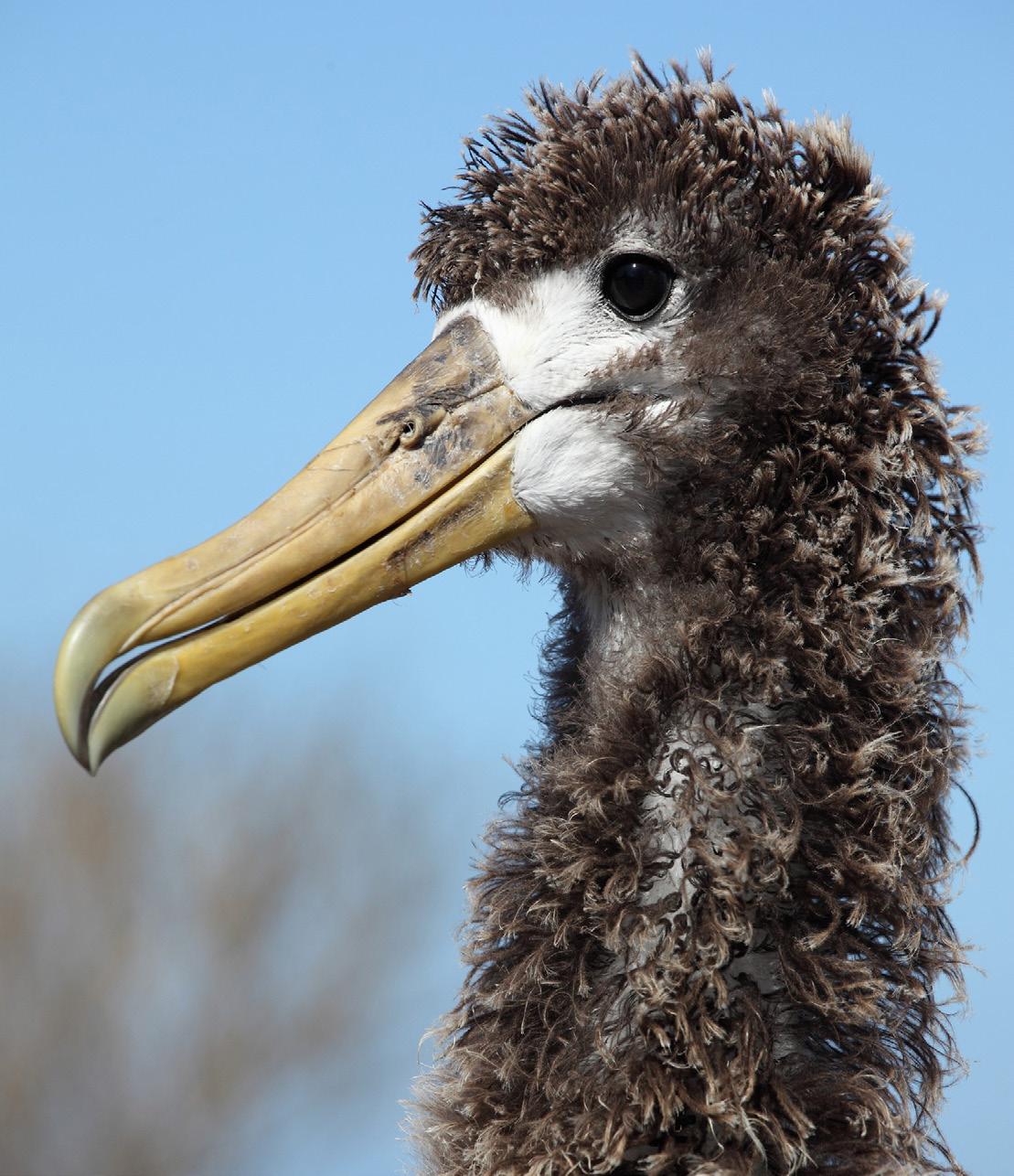 Waved Albatross chick by Photovolcanica.com
Waved Albatross chick by Photovolcanica.com

Wind energy is a key component of our transition to a clean energy future in our battle against climate change. However, turbines can also have negative impacts upon aerial wildlife populations like birds and bats.
Impacts to birds can generally be classified into direct mortality or displacement. Direct mortality occurs when birds physically collide with the turbine blades, causing injuries or death. Some species, like Golden Eagles or Northern Gannets, are susceptible to collisions as they hunt on the wing or migrate along ridges where turbines are built. Collisions also occur when birds are attracted to turbines through particular lighting regimes, or when unable to detect turbines during times of poor visibility.
Displacement occurs when birds avoid turbines which can cause reduction in available habitat, or increased energetic expenses during migration. For instance, Lesser Prairie Chickens are wary of and avoid tall structures throughout their grassland habitats, as these structures are seen as potential perches for predators. Whooping Cranes generally seem to avoid turbines as well, and this can cause them to take circuitous flight paths during migration and thus increase the energetic costs of long-distance movements.
ABC’s Bird-Smart Wind Energy program works throughout the Western Hemisphere to help guide wind energy development in ways which minimize impacts to birds. We engage with lawmakers, regulators, partner organizations, and industry itself to push for responsible wind energy development. Bird-Smart Wind Energy follows six principles:
(1) Proper siting of turbines away from high-bird-collision-risk areas;
(2) Independent, transparent pre-and-post-construction monitoring of bird impacts;
(3) Effective construction and operation minimization of bird mortality by wind energy facilities;
(4) Mitigation to compensate for any unavoidable bird mortality and habitat loss;
(5) Evaluation of wind energy as part of a complete analysis on all feasible renewable alternatives & (6) Environmental compliance with a rigorous local, state, and federal regulatory framework.
Mitigation of wind energy impacts to birds is vital to long-term population health, but the most important component of Bird-Smart Wind Energy is siting. Policy solutions which encourage developers to consider wildlife impacts as they search for new development sites are most effective. Clear statutory language requiring developers to consider and mitigate impacts of wind energy development on birds provides the strongest baseline for future regulation.
Hawai’i Act 155
Hawai’i Multiple bills under the Hawai’I Clean Energy Initiative
Establishes Renewable Energy Zones (REZ) for favored development in “environmentally benign” areas
Requires third-party monitoring of turbines for bird carcasse.
Colarado Requires that developers of wind turbines “avoid, minimize, and/or mitigate” impacts to birds
2009 Enacted
2006Present Enacted
2015 Enacted
The U.S. Fish and Wildlife Service’s Land-Based Wind Energy Guidelines serve as a strong baseline for evaluating project-level impacts to birds. ABC’s Bird-Smart Wind Energy principles similarly provide project-level guidance. The Renewable Energy Wildlife Institute catalogs relevant scientific research in the field.
For more information, contact: Lewis Grove, Director of Wind and Energy Policy, lgrove@abcbirds.org


Whether cats, collisions, lighting, pesticides, plastics, or wind, there are a wide variety of ways to address each of these threats to birds. In many cases a small win, such as passing an ordinance or a less-intensive law, are great stepping stones to broader change.
Please feel free to reach out to ABC experts on any of these issues. Keep in mind that writing and passing legislation takes patience and perseverance. The path from bill to law is most successful when done with a coalition of support from like-minded groups, local stakeholders, and subject matter and policy experts. By working together, real progress can be made toward conserving wild birds and their habitats.
ABC’S MISSION:
American Bird Conservancy (ABC) is dedicated to conserving wild birds and their habitats throughout the Americas.
ABC’S STRATEGIC BIRD CONSERVATION FRAMEWORK:
The simple yet effective framwork outlines the high-level outcomes we work to acheive. >>>
ACKNOWLEDGMENTS:
ABC Advocacy and Threats team made this report possible. Contributing ABC staff include Annie Chester, Hardy Kern, Steve Holmer, Grant Sizemore, Christine Sheppard, Kaitlyn Parkins, and Lewis Grove.
© American Bird Conservancy, 2024.

